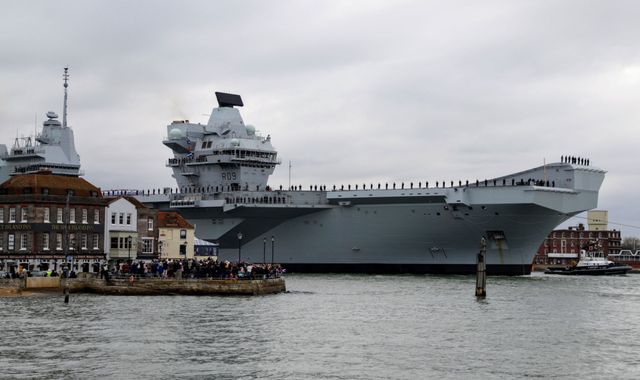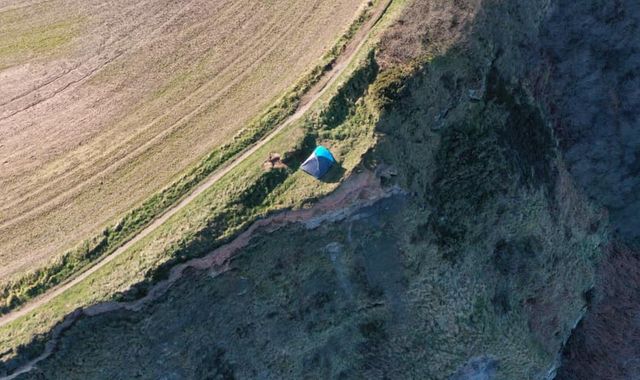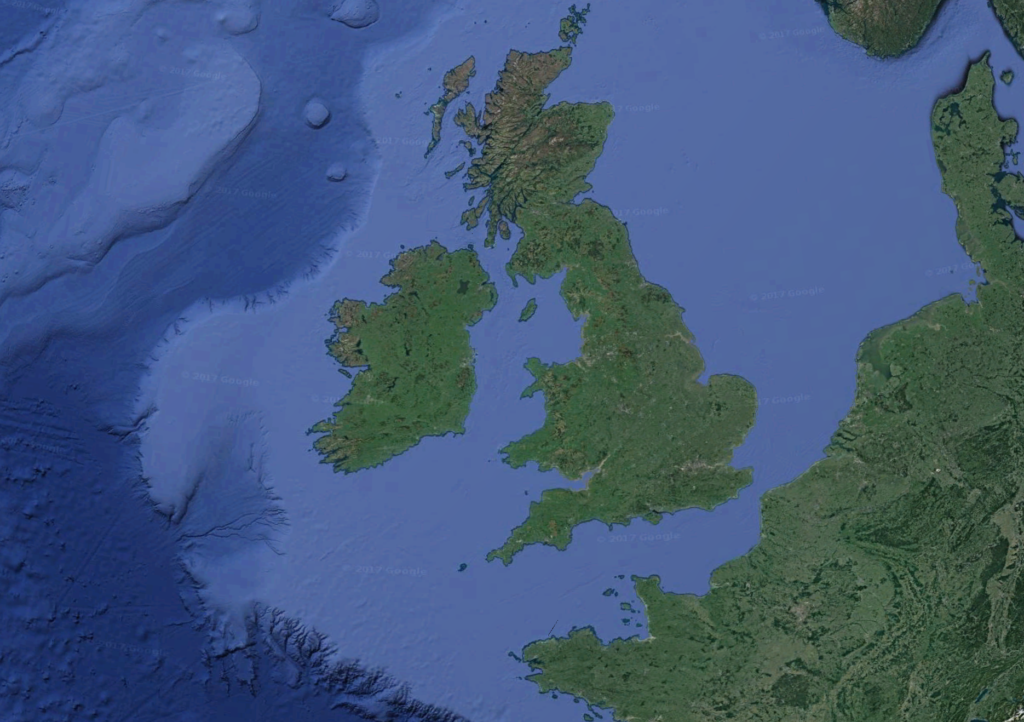Royal Navy’s new aircraft carrier ready for deployment – with 66,000 sausages on board
Written by News on 17/11/2019
HMS Prince of Wales arrived in its home port of Portsmouth for the first time on Saturday.


Hundreds of people, including industry employees, navy personnel and their families, gathered along the shoreline to welcome the £3.1bn aircraft carrier, which set sail in September from Rosyth dockland in Scotland where it was built.
Major upgrade work has been carried out at the jetties to ensure the second of the Royal Navy’s newest war vessels can eventually berth next to its sister ship, HMS Queen Elizabeth – which is currently on a visit to the US.
Both are expected to be in service for 50 years and can be called into action for various work, including high intensity fighting and providing humanitarian aid and disaster relief.
When HMS Prince of Wales is deployed, it will typically carry 66,000 sausages, 28,800 rashers of bacon, 64,800 eggs and 12,000 tins of beans.
The ship’s arrival into Portsmouth represents the culmination of 16 years of work by the Aircraft Carrier Alliance (ACA) – BAE Systems, Babcock, Thales and the Ministry of Defence.
More than 10,000 people across the UK have been involved, with six British shipbuilding yards playing a vital role in the design and construction.
Sir Simon Lister, managing director of the ACA, said: “Delivering next generation naval capability of this complexity is not only a proud moment for our employees but also showcases the industrial capability within the UK.
“This programme has brought together the best of British imagination, ingenuity and invention and I am extremely proud of our teams who have shown relentless drive, energy and a continued focus on ensuring we deliver the very best for the Royal Navy.”
Here are some facts about the ships:
- They can keep 45 days’ worth of food in their stores and a typical deployment would sail with 66,000 sausages, 28,800 rashers of bacon, 64,800 eggs and 12,000 tins of beans
- They each have 67 catering staff and their own bakery, which can produce 1,000 loaves of bread per day
- The ships have their own police office and cells, as well as their own dentist, pharmacy, surgery and operating theatre, fitness suites and cinemas
- They can convert sea water into more than 500 tonnes of drinking water each day – used for both the crew and for providing humanitarian relief
- Each flight deck is 70m wide and 280m long – enough space for four jumbo jets
- The ships are 56m from keel to masthead which is six metres taller than Nelson’s Column – and each has 17 decks and 15 lifts
- They generate 80mw of power in their propellers, which is equal to 50 high speed trains
- Each ship can accommodate up to 1,600 personnel, which would include a full air crew, but also provides space for embarked personnel such as Royal Marines
- The fog horn is 162 decibels and can be heard from more than two miles away
- Each ship is made up of 17 million parts and there are more than 250,000km of electrical cable and 8,000km of fibre optic cable inside each of them
- There are also 364,000m of pipes inside each vessel, which could stretch from Rosyth to Wales.
(c) Sky News 2019: Royal Navy’s new aircraft carrier ready for deployment – with 66,000 sausages on board







